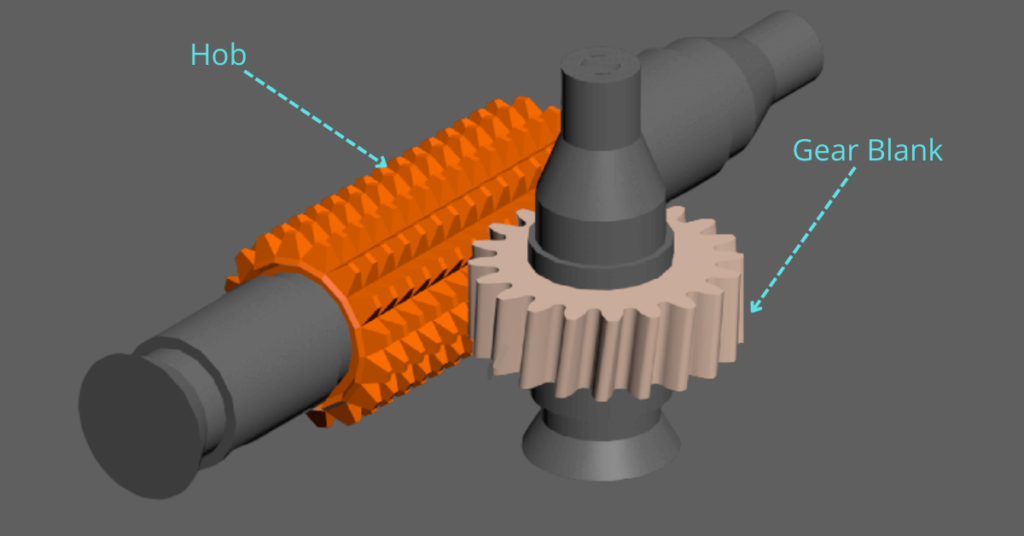Gears are one of the important parts in industrial machines, equipment, automobiles, and so on. This is because they facilitate speed adjustment and controlled motion irrespective of the type of motion, such as rotational, linear, and more. Considering their immense significance, gears must be made precisely and set in motion to get the desired speed. Today, several machining processes are used as part of gear manufacturing, such as gear shapping. Gear hobbing is the most popular and widely preferred machining process for gear manufacturing. In this technique, a gear tooth is machined with combined and repetitive motion of a workpiece and cutting tool. Both, a workpiece and cutter continuously rotate in a synchronized motion. Are you intrigued to know more about gear hobbing?

Gear hobbing helps form gear teeth using a rotating cutter tool. It is a continuous process performed by setting the rotating speed as required. The formation of teeth can be done on a gear blank workpiece using a rotating cutter called hob on CNC gear hobbing machines. Gear hobbing machine is a special milling equipment widely preferred in the gear production industry. The rotating velocity and speed must be synchronized with the gear blank for teeth formation. In this technique, the gear blank workpiece is fed towards the gear bank until the desired depth is not achieved. This process repeats until all the teeth are completely formed. Hobs can be chosen depending on the application requirement. They are available in different types such as spur, chamfer, roller, spine, and more. For spur gear hobbing, the hob axis is set parallel to the axis of rotation of the gear blank workpiece. In helical teeth hobbing, the hob teeth are set over a specified angle, while for worm gears, the hob teeth are set at the right angle to the gear blank workpiece.
Gear hobbing service has benefited OEMs in several ways. The following are some important benefits of this technique.
Gear hobbing machine can be used to produce the following types of finished gears:
By now, you may have got an idea regarding various aspects of the gear hobbing service. If your upcoming automotive industrial applications demand standard or customized gearboxes, make sure you approach an industry-leading supplier who thoroughly understands your requirement and offers solutions accordingly. Also, make sure the supplier is EASA certified. Motor & Gear Engineering stands tall among their other competitors. The company is one of the leading industry players that specializes in offering quality repair and rebuilding services for several branded gearboxes. The company has highly skilled and experienced experts in the gearbox segment. They are well-known for offering custom machining capabilities and reliable solutions across industries.